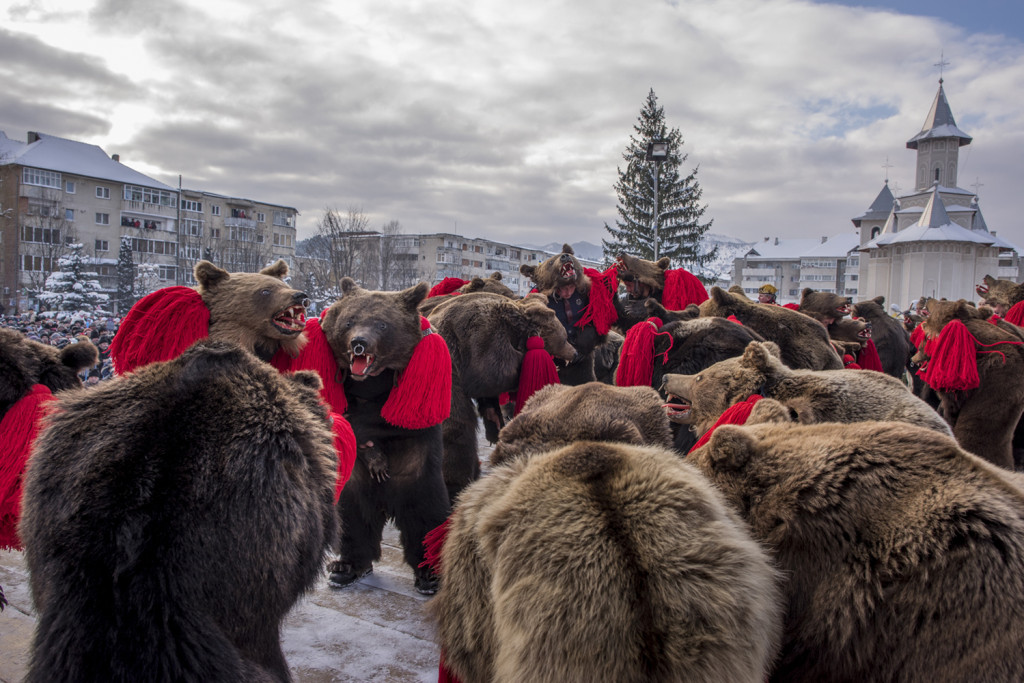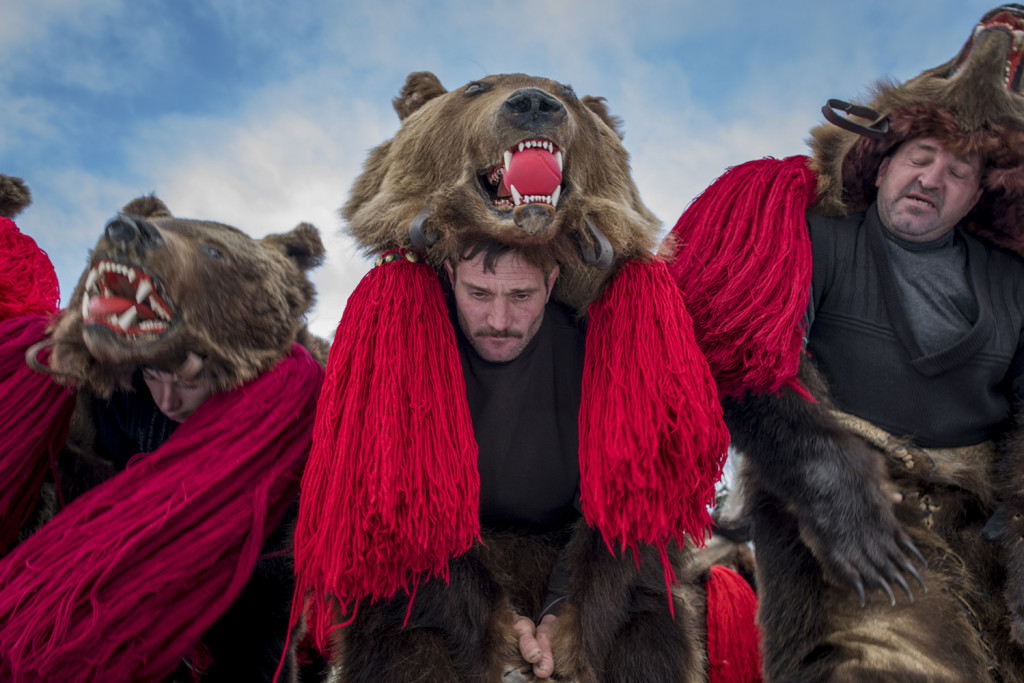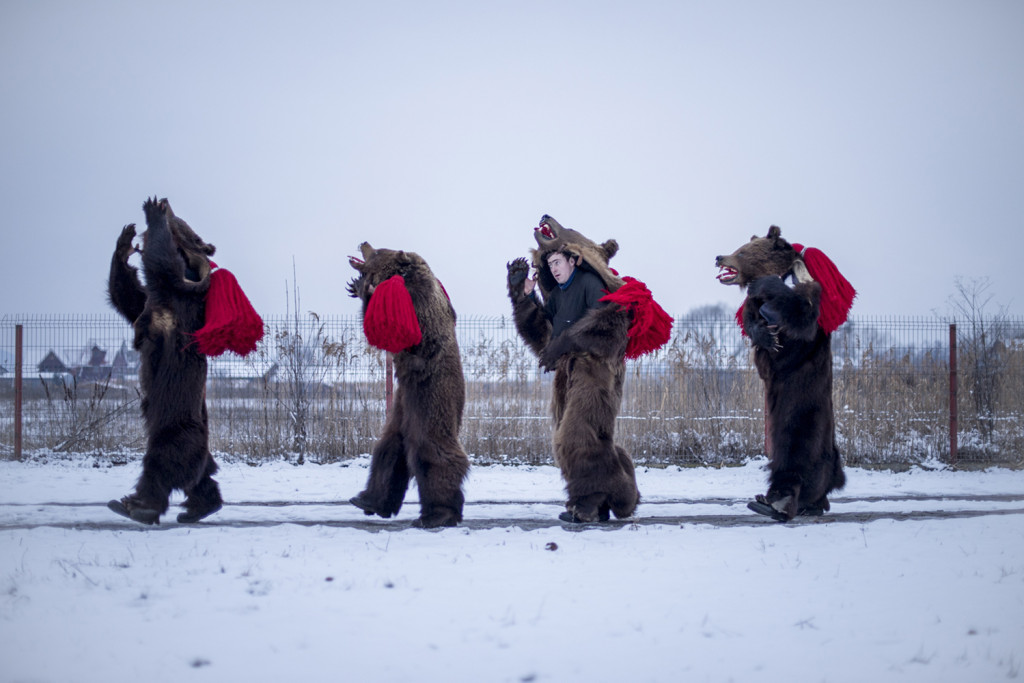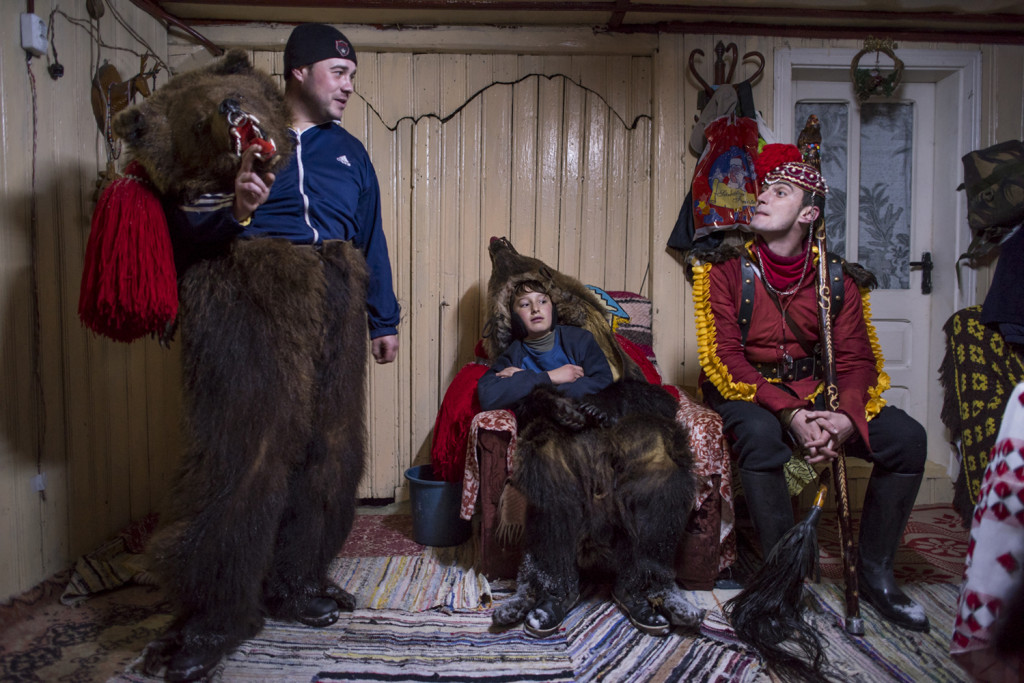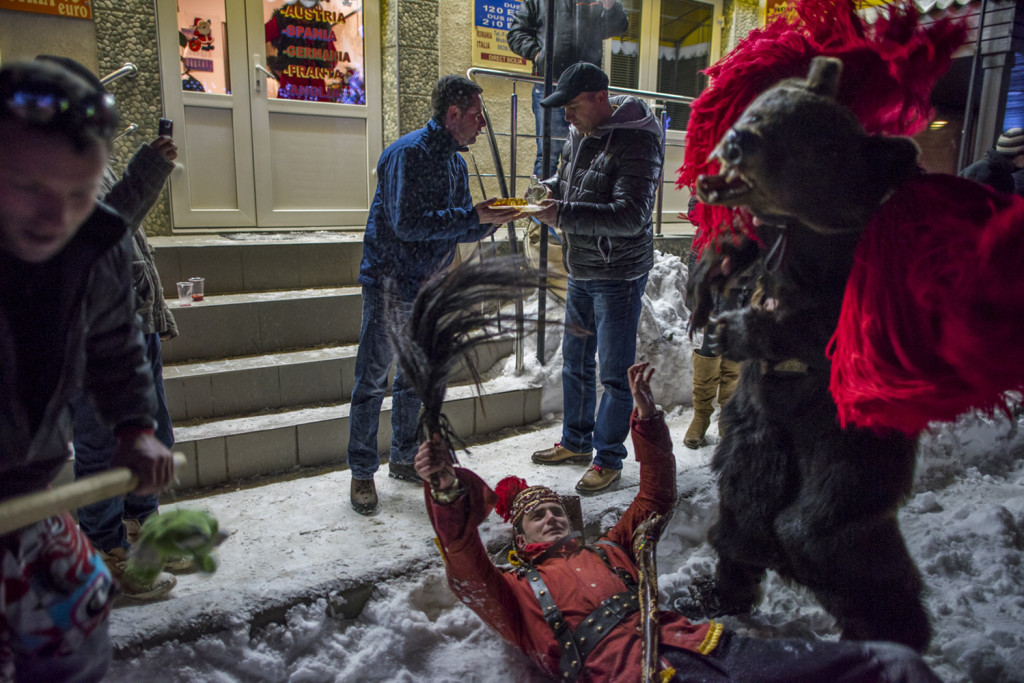Artist’s Statement:
Between Christmas and the New Year, in a handful of towns and villages along the Trotus Valley of Romania’s Moldova region, troupes of “dancing bears” – men and women of all ages wearing real bear skins – tour private homes and restaurants in a ritual whose function is to chase away last year’s bad spirits. The origin of this “bear dance” dates back to practices as recent as the 1930s when vagrant gypsies (Romania’s infamous Roma minority) would descend from the surrounding mountains with bears on leashes to visit the homes of villagers. In exchange for a tip, the gypsies would set bear cubs to walk on the backs of villagers with back pains. Once a bear aged, it served a different purpose – the gypsies would set the bear to walk on hot metal sheets, which would cause the animal to “dance” or skitter about to avoid the burning sensation beneath its feet. These visits were made around the New Year, in coordination with other ethnic Romanian rituals performed during the holiday season. It is unclear when gypsies began wearing bear skins and imitating the dancing bear, or when ethnic Romanians adapted the ritual. What is strinkingly clear is that today gypsies are largely excluded from “bear dancing.” Both discrimination and the costliness of bear skins – it is no longer legal to hunt bears, and a skin can now cost as much as 2000 euros – are to blame. Moreover, with the modernization and westernization of the youth generation and the financial struggles of rural households in post-communist Romania, the entire tradition is now at risk of disappearing. The “bear dance” has survived due to the efforts of local governments who organize parades and competitions to incentivize the organization of bear troupes, as well as the individual efforts of troupe leaders who were brought up with the tradition and continue to hold it close to their hearts.
Artist’s Bio:
Diana Zeyneb Alhindawi is a Brooklyn-based photographer who uses photography to explore the human condition across a variety of political and cultural contexts. Her work tends to focus on either the survival of cultural diversity, or areas experiencing social unrest or humanitarian emergencies. Her photography has been published and showcased by media outlets like Al Jazeera America and Marie Claire, and various international NGOs, including Doctors Without Borders. Diana’s interests reflect her multicultural background and upbringing: born in rural Romania to a Romanian mother and Iraqi father, Diana witnessed her family experience political circumstances that landed them as refugees in the former Yugoslavia, after which they were resettled to Canada. These early experiences led her to pursue careers in humanitarian aid and in human rights. For several years, she held management and research positions with large international organizations, working on the ground in areas affected by conflict or natural disasters. In mid-2013, she decided to focus her professional efforts entirely on photography. Diana holds two BA degrees – one in Economics and one in Neuroscience – from The Johns Hopkins University, and has completed all but her thesis for a MA degree in International Development from American University, School of International Service.

